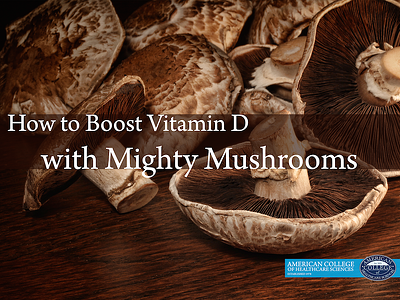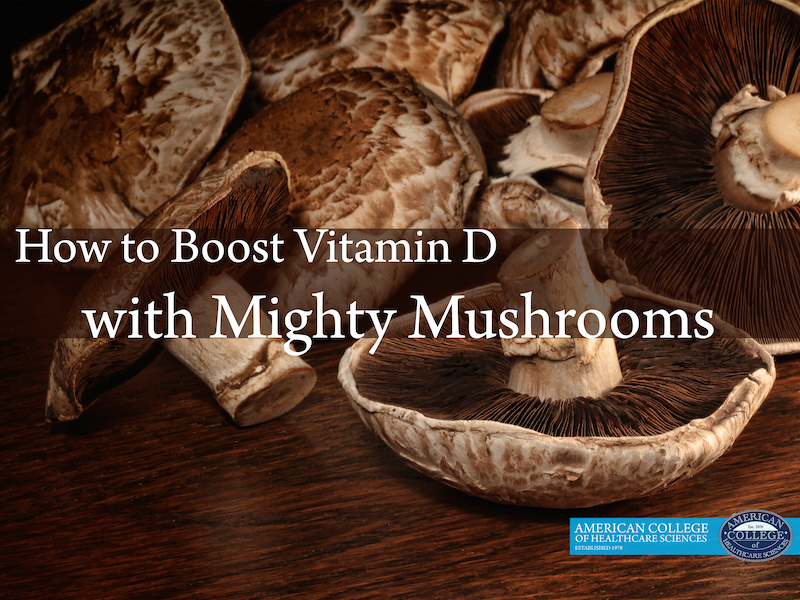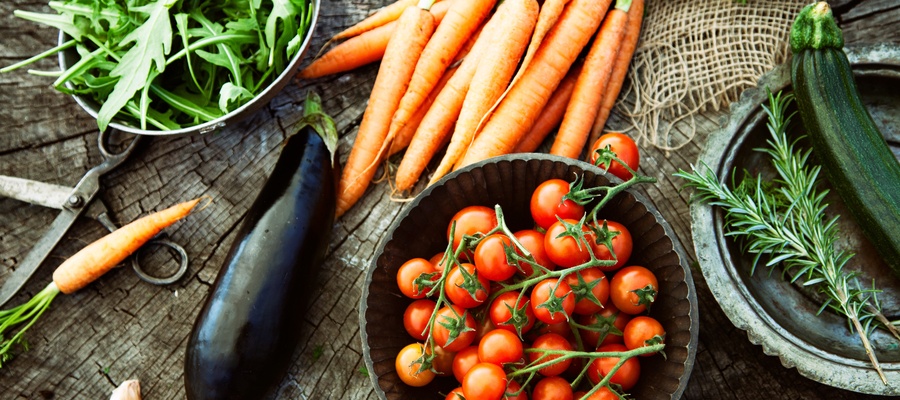 As the seasons change, so do the needs of our bodies. The natural ebb and flow of weather, temperature, and sunlight all have an impact on our wellbeing. Supporting the body’s ability to adapt is important during times of change. As we reach the end of winter and enter into spring, are you aware of your body’s needs?
As the seasons change, so do the needs of our bodies. The natural ebb and flow of weather, temperature, and sunlight all have an impact on our wellbeing. Supporting the body’s ability to adapt is important during times of change. As we reach the end of winter and enter into spring, are you aware of your body’s needs?
What You Should Know About Vitamin D
Vitamin D has been dubbed the “sunshine vitamin” because its synthesis in the body begins when the skin is exposed to sunlight. This is the most efficient way to satisfy our bodies’ needs for vitamin D.
During seasons when our time outside is limited, we can easily become deficient in vitamin D. In fact, those living in northern latitudes with insufficient winter sunlight may not be able to properly synthesize vitamin D for six months out of the year!
Specific wavelengths of light are more effective for synthesizing vitamin D than others and during the winter months, the angle of the sun above 30 degrees latitude makes the wavelengths far less effective. Plus, do you avoid going outside during the colder months? When you do venture out, are you bundled up head to toe? What little sunlight there is—no matter the wavelength—doesn’t stand a chance of reaching your skin. These issues coupled with overuse of sunscreen during sunny months makes vitamin D deficiency one of, if not the most, common vitamin deficiencies in the United States.[2]
Vitamin D and the Mighty Mushroom
Fortunately, recent research suggests we may be able to obtain more vitamin D through diet than originally thought. Here is where the mighty mushroom comes in. When exposed to sunlight it has been shown that mushrooms may contain significant amounts of vitamin D2.[3][4][5][6][7]
Mushrooms are abundant in ergosterol, which when exposed to UV light, is converted to bioavailable vitamin D2. In addition to a high quality vitamin D3 supplement, studies suggest that eating sunlight-exposed (or UVB-irradiated) mushrooms can help maintain vitamin D levels throughout the winter.[8][9][10][11][12] For example, irradiated raw portabella mushrooms have been shown to contain up to 835 IU of vitamin D2 per 100 grams,[13] while any variety of cooked mushrooms contain even more vitamin D2—up to 1,022 IU/100g.[14] The daily vitamin D upper limit (UL) for healthy adults is 4,000 IU and while vitamin D toxicity is rare, the UL should be observed.[15]
Organic store-bought or organic home-grown mushrooms (for the experienced) can simply be placed outside or on a sunny window ledge to begin the D2 synthesizing process. It is as easy as that! Any mushroom will work, though maitake and portabella have been shown to provide significantly more vitamin D2 than other varieties.[16]
Including sun-soaked mushrooms in your holistic diet may help ensure adequate vitamin D2 intake during the winter and early spring months. The mighty mushroom, however, lacks vitamin D3. Vitamin D3 is mainly synthesized in the skin of mammals, including pigs and sheep. While you can get your vitamin D3 from these sources, eating pig and sheep skin is not always ideal. Instead, fortified orange juice, cod liver oil, or supplementing 800-1,000 IU per day of vitamin D during the winter months may be your best bet.[17]
Which type of vitamin D is more important is debatable; therefore, it is generally a good idea to consume sources of each.
The recommended vitamin D requirement for children is 400 to 800 IU per day, for adults it is 1,000 IU per day, and for those over the age of 50, approximately 2,000 IU are needed per day. Before implementing a supplement plan, it is important to consult with your healthcare professional. Those with Crohn’s disease or Sarcoid cancers should not take vitamin D because their bodies may already produce excess amounts.
What is your favorite way to cook with mighty mushrooms? I’d love to hear your recipes and tips in the comments!
This article is for informational purposes only. It is not intended to treat, diagnose, cure, or prevent disease. This article has not been reviewed by the FDA. Always consult with your primary care physician or naturopathic doctor before making any significant changes to your health and wellness routine.
Disclosure of Material Connection: I am a current student enrolled at American College of Healthcare Sciences, the Institution that publishes this blog. However, all opinions are my own. This blog may contain affiliate links. I am disclosing this in accordance with the Federal Trade Commission’s 16 CFR, Part 255: “Guides Concerning the Use of Endorsements and Testimonials in Advertising.”
[1] Archer, D. (2013). Vitamin D deficiency and depression. Psychologytoday.com. Retrieved from https://www.psychologytoday.com/blog/reading-between-the-headlines/201307/vitamin-d-deficiency-and-depression
[2] Holick, M. (2005). The Vitamin D Epidemic and its Health Consequences. The Journal of Nutrition, 135(11), 2739S-2748S. Retrieved February 24, 2015, from http://jn.nutrition.org/content/135/11/2739S.short
[3] Jasinghe, V. J., Perera, C. O., & Barlow, P. J. (2005). Bioavailability of vitamin D2 from irradiated mushrooms: An in vivo study. The British Journal of Nutrition, 93(6), 951-5. doi: http://dx.doi.org/10.1079/BJN20051416
[4] Keegan, R., Lu, Z., Bogusz, J., Williams, J., & Holick, M. (2013). Photobiology of vitamin D in mushrooms and its bioavailability in humans. Dermato-Endocrinology, 5(1), 165-176. Retrieved February 24, 2015, from http://www.ncbi.nlm.nih.gov/pmc/articles/PMC3897585/
[5] Mushrooms a surprising source of vitamin D: ultraviolet light boosts fungi's ability to help protect your bones. (2013, August). Tufts University Health & Nutrition Letter, 31(6), 7. Retrieved from http://go.galegroup.com/ps/i.do?id=GALE%7CA339119697&v=2.1&u=lirn12711&it=r&p=ITOF&sw=w&asid=6e809e23814722319b0582309717c9f1
[6] Urbain, P., F. Singler, G. Ihorst, H-K Biesalski, and H. Bertz. "Bioavailability of Vitamin D2 from UV-B-irradiated Button Mushrooms in Healthy Adults Deficient in Serum 25- hydroxyvitamin D: A Randomized Controlled Trial." European Journal of Clinical Nutrition (2011): 965-71. ProQuest. Web. 15 Dec. 2014.
[7] Haytowitz, D. (n.d.). Vitamin D in Mushrooms. Retrieved February 24, 2015, from http://www.ars.usda.gov/SP2UserFiles/Place/80400525/Articles/AICR09_Mushroom_VitD.pdf
[8] Jasinghe, V. J., Perera, C. O., & Barlow, P. J. (2005). Bioavailability of vitamin D2 from irradiated mushrooms: An in vivo study. The British Journal of Nutrition, 93(6), 951-5. doi: http://dx.doi.org/10.1079/BJN20051416
[9] Keegan, R., Lu, Z., Bogusz, J., Williams, J., & Holick, M. (2013). Photobiology of vitamin D in mushrooms and its bioavailability in humans. Dermato-Endocrinology, 5(1), 165-176. Retrieved February 24, 2015, from http://www.ncbi.nlm.nih.gov/pmc/articles/PMC3897585/
[10] Mushrooms a surprising source of vitamin D: ultraviolet light boosts fungi's ability to help protect your bones. (2013, August). Tufts University Health & Nutrition Letter, 31(6), 7. Retrieved from http://go.galegroup.com/ps/i.do?id=GALE%7CA339119697&v=2.1&u=lirn12711&it=r&p=ITOF&sw=w&asid=6e809e23814722319b0582309717c9f1
[11] Urbain, P., F. Singler, G. Ihorst, H-K Biesalski, and H. Bertz. "Bioavailability of Vitamin D2 from UV-B-irradiated Button Mushrooms in Healthy Adults Deficient in Serum 25-hydroxyvitamin D: A Randomized Controlled Trial." European Journal of Clinical Nutrition (2011): 965-71. ProQuest. Web. 15 Dec. 2014.
[12] Haytowitz, D. (n.d.). Vitamin D in Mushrooms. Retrieved February 24, 2015, from http://www.ars.usda.gov/SP2UserFiles/Place/80400525/Articles/AICR09_Mushroom_VitD.pdf
[13] Haytowitz, D. (n.d.). Vitamin D in Mushrooms. Retrieved February 24, 2015 from http://www.ars.usda.gov/SP2UserFiles/Place/80400525/Articles/AICR09_Mushroom_VitD.pdf
[14] Ibid.
[15] Vitamin D. (n.d.). Retrieved February 24, 2015, from http://ods.od.nih.gov/factsheets/VitaminD-HealthProfessional/
[16] Haytowitz, D. (n.d.). Vitamin D in Mushrooms. Retrieved February 24, 2015, from
http://www.ars.usda.gov/SP2UserFiles/Place/80400525/Articles/AICR09_Mushroom_VitD.pdf
[17] Biancuzzo, R., Young, A., Bibuld, D., Cai, M., Winter, M., Klein, E., ... Holick, M. (2010). Fortification of orange juice with vitamin D2 or vitamin D3 is as effective as an oral supplement in maintaining vitamin D status in adults. American Journal of Clinical Nutrition, 91(6), 1621-1626. Retrieved February 24, 2015 from http://ajcn.nutrition.org/content/91/6/1621.short






